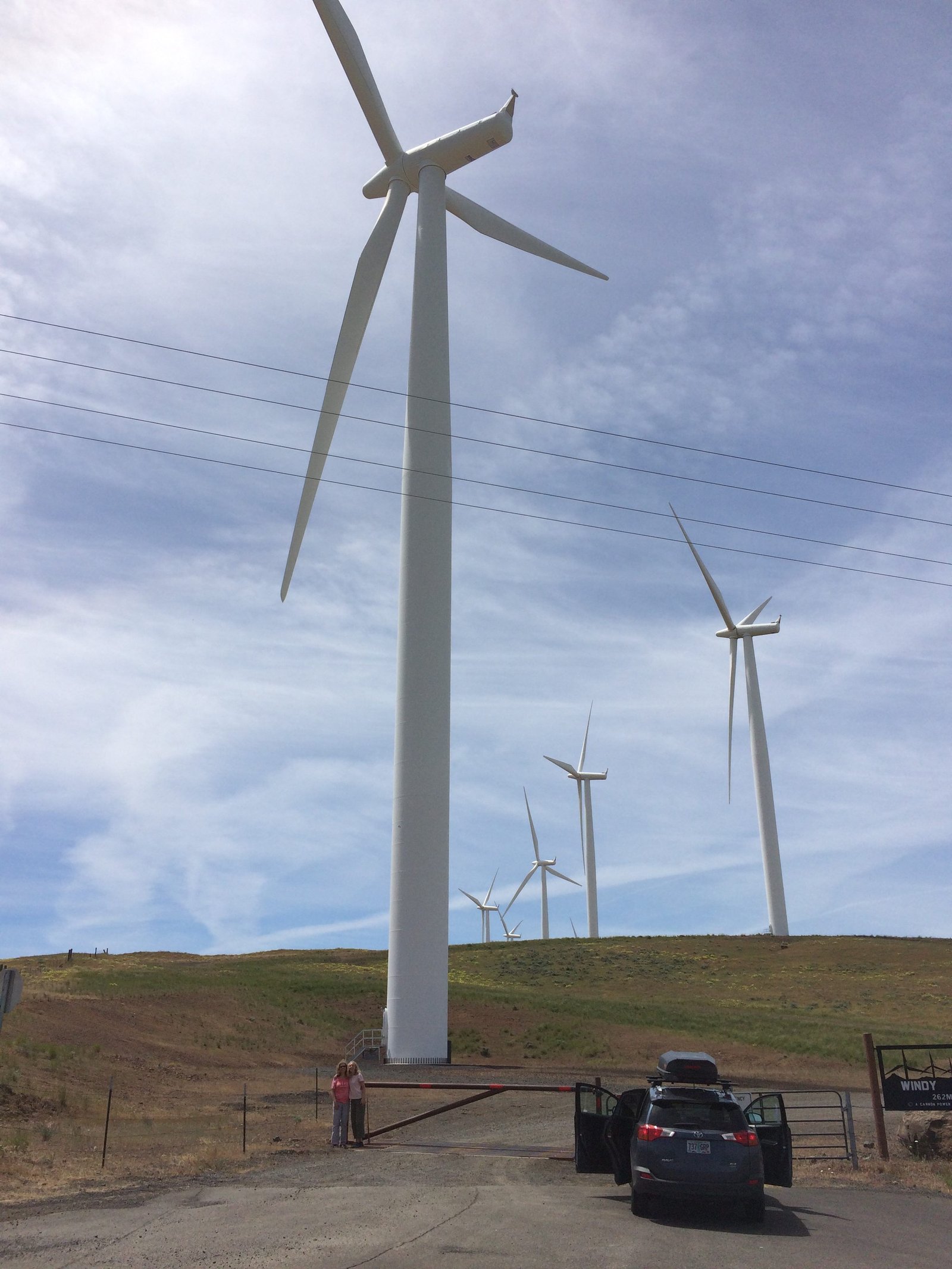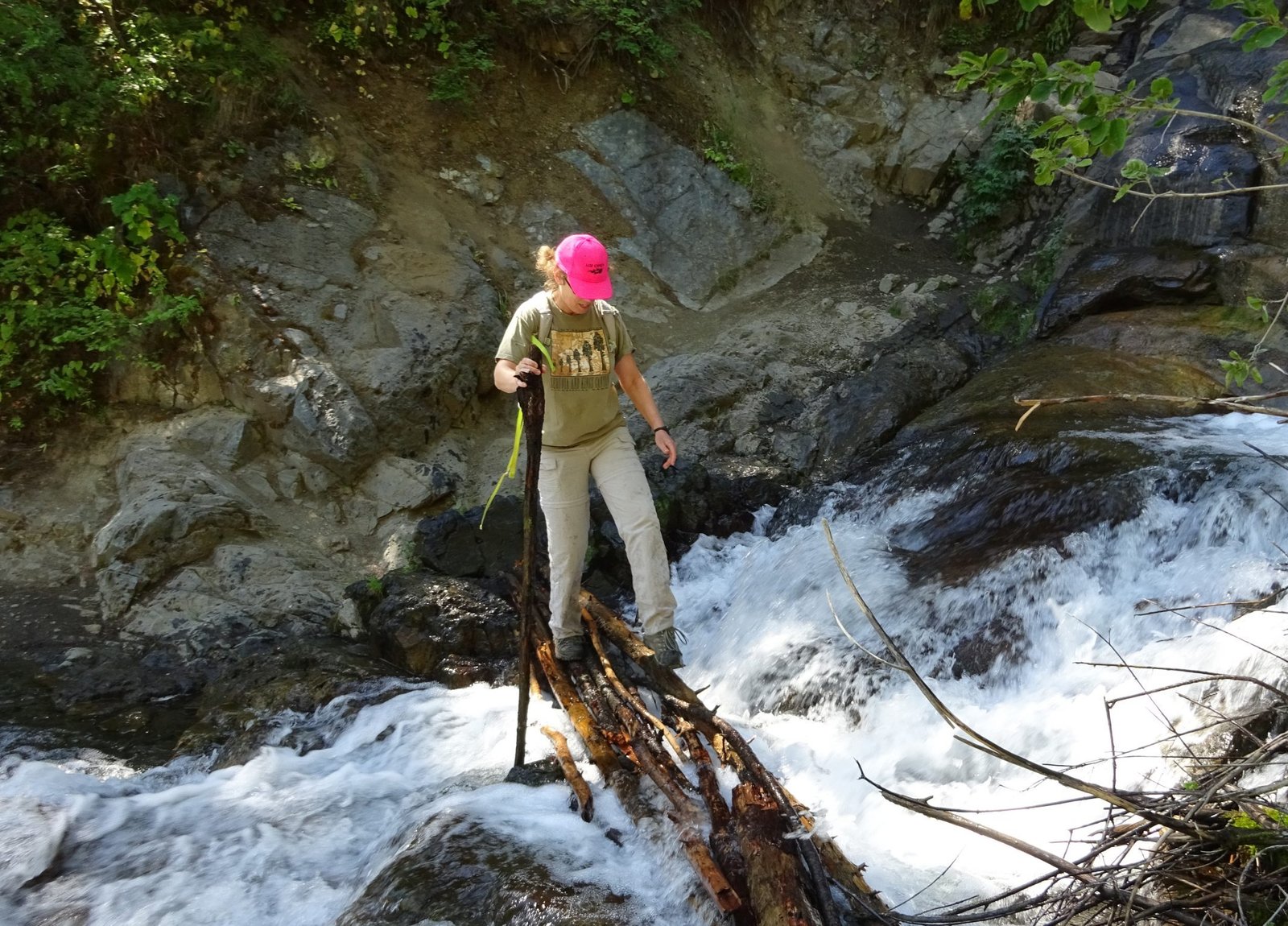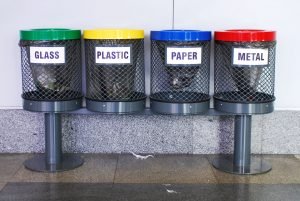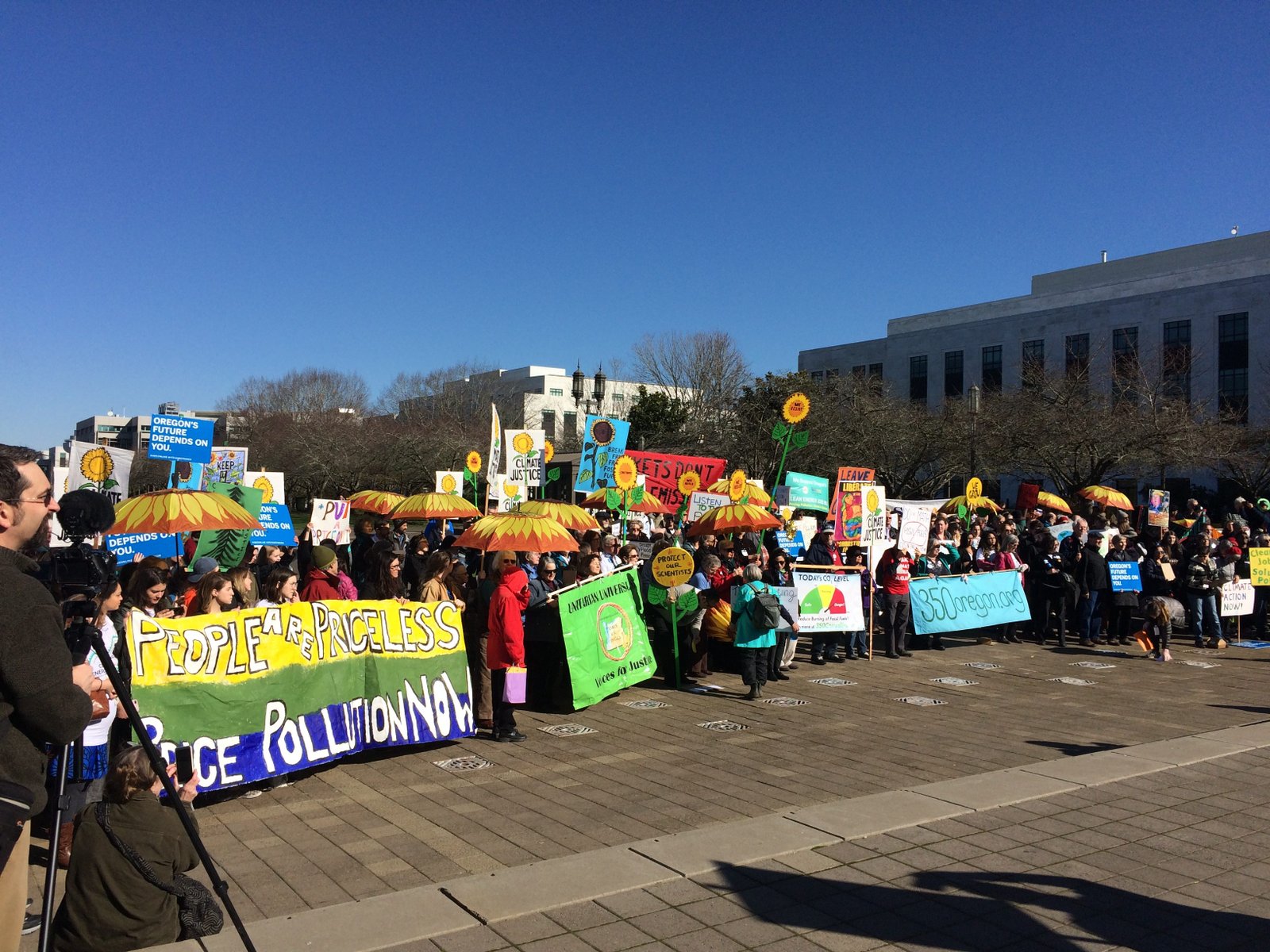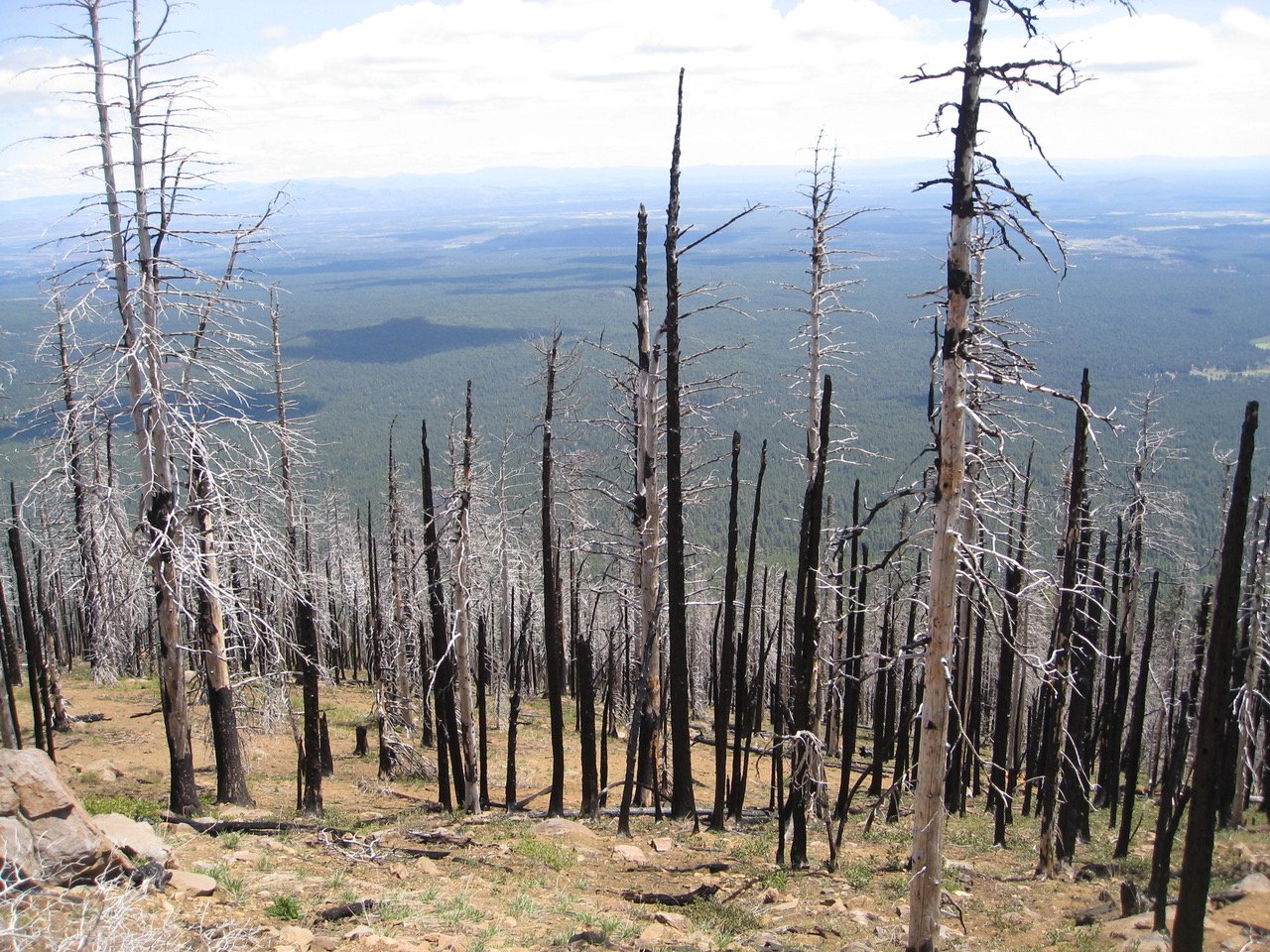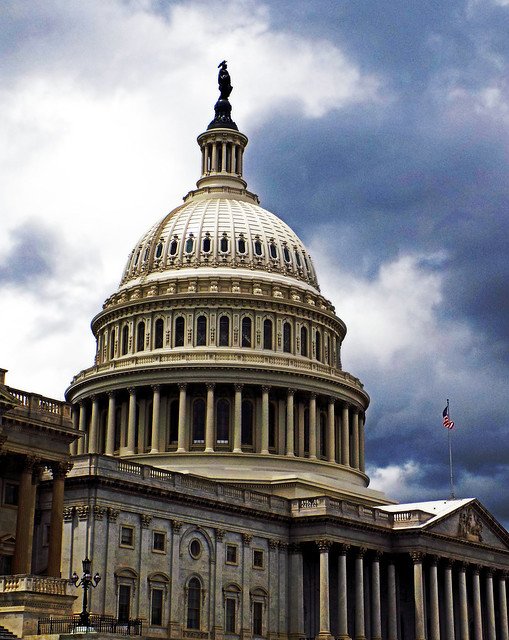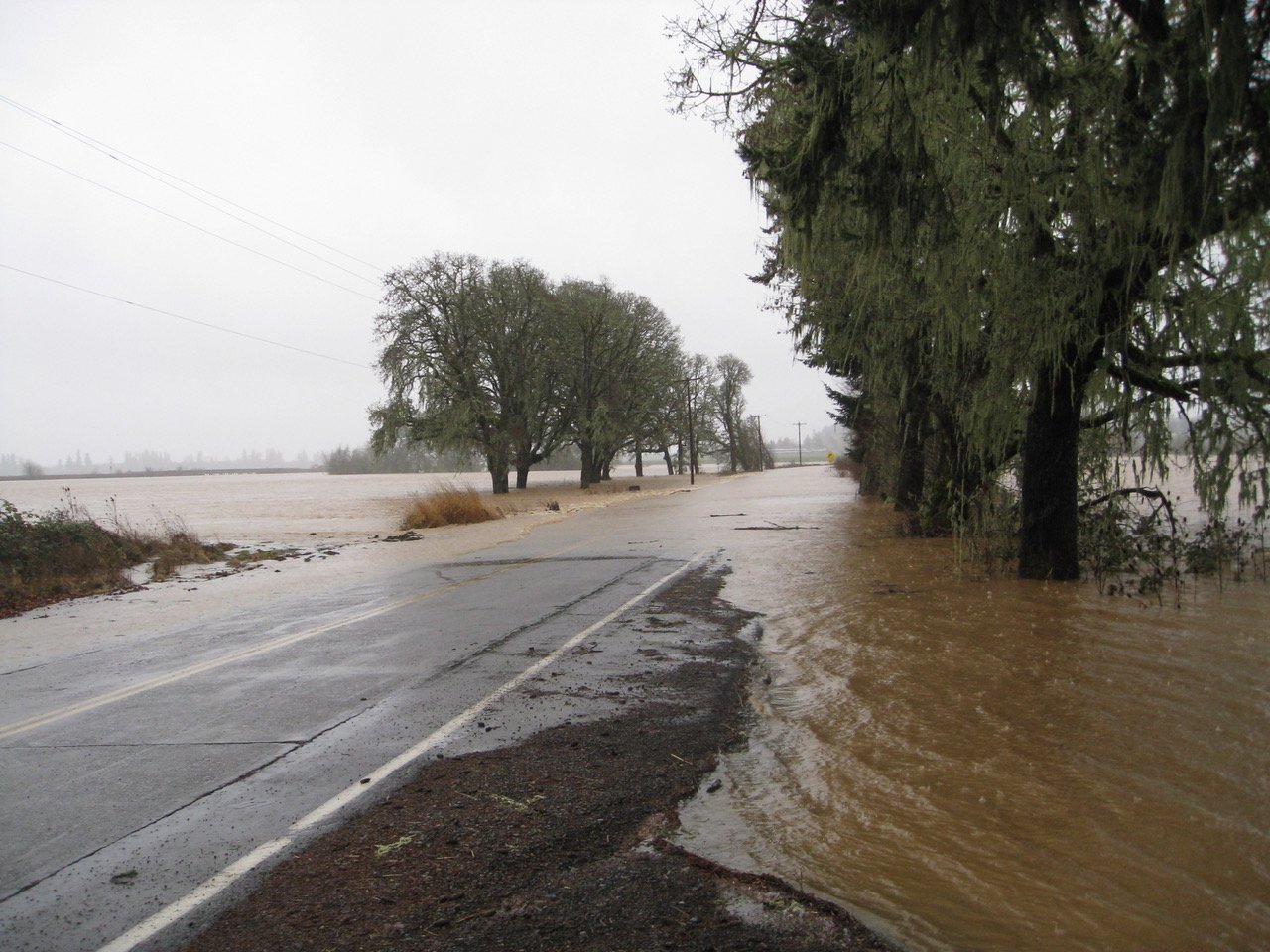The four things we need to do now for climate action (Thank you, David Roberts!)
Last fall, I did something I thought I would never, ever do: I leased a brand-new car. I had been driving a used all-electric Nissan Leaf, and its 40-mile range just didn’t work for me anymore. So I leased an all-electric Chevy Bolt. Although I’m not crazy about having a car payment, I feel great about this choice; leasing an electric vehicle passed the test I use to decide which climate actions to take and which climate policies to support.
Where did I get this test? David Roberts, who writes about climate change and energy for Vox, gave it to me in his article “What genuine, no bulls**t ambition on climate change would look like.”
In this article, Roberts discusses three publications examining pathways to the 1.5°C target discussed in the Paris Climate Agreement. He finds that all the scenarios agree there are four things we absolutely must do–and do quickly–to have any reasonable chance of containing runaway climate change before its consequences become catastrophic and it threatens human societies around the world.
First, we need to dramatically increase energy efficiency. How efficient we are is measured as “energy intensity,” defined as the amount of energy required to produce a unit of GDP. In all three scenarios, energy intensity needs to fall quickly and outpace economic growth. In one scenario, energy intensity falls by two thirds by 2050. Polices that raise efficiency standards for buildings, industries, vehicles, and appliances are all effective ways to catalyze this change. So is placing a rising price on carbon emissions.
Second, we need to dramatically increase renewable energy production. All scenarios show renewables—mostly wind and solar—rapidly becoming the dominant sources of electricity. The scenarios range from 85% renewable electricity generation by 2050 to 100% renewable electricity by 2040. Carbon pricing, renewable electricity standard laws, incentivizing renewable energy development, eliminating fossil fuel subsidies, and many other policies can speed up the shift to clean electricity generation.
Third, we need to electrify everything.This is where my all-electric Bolt comes in. All scenarios require electrification of all sectors currently running on fossil fuels. Once our economy runs on electricity, we have the technology and the infrastructure to run it on clean energy. Currently, the many issues related to making zero-carbon liquid fuels have not been resolved.
The fourth thing we must do is to sequester carbon, or, as Roberts puts it, pursue negative emissions. Even if we ramp up quickly on global efforts to decarbonize our energy systems, all three scenarios suggest we will also need to remove some carbon dioxide from the atmosphere. Both forests and soils have the potential to store a lot of carbon. Planting trees, allowing forests to regrow, and changing to agricultural practices that enrich soil carbon have the potential to sequester carbon. A variety of interesting proposals and programs have started to find ways to do this.
David Roberts is my favorite climate journalist. I don’t always agree with his strong opinions or love his sometimes snarky Twitter feed, but he’s a voracious consumer of key climate information and a fantastic big-picture synthesizer of what it all means. I also think he’s really smart. He helped me to see that assessing climate solutions is pretty simple. I’m for any solution or policy that contributes in a big way to these four steps—increasing energy efficiency, increasing renewable energy production, electrifying everything, and sequestering carbon—because we know what we must do and we are out of time.
One clean energy solution you may be underestimating
When I was a kid, my favorite grandfather–a retired businessman and a dreamer–bought us a windmill. We were excited by the idea of wind generating some of our electricity, but that’s not what happened. After a series of delays and mishaps, the assembled structure was a spindly, fragile-looking thing perched on a tall metal lattice structure that from the start failed to produce any significant electricity at my parents’ gusty cliff-side house, an expensive disappointment.
 Forty years later, as I’m traveling through eastern Washington, modern wind turbines dot the wide-open grasslands. Cows grazing on a nearby hillside look very much like tiny black and white ants. It’s tricky to get a sense of the scale of these descendants of my grandfather’s windmill until we turn off on a side road that leads to a pullout near the base of a turbine. The tower is at least 200 feet tall, with three blades that are more than 100 feet long; I’ve read that the energy generated by a single one of today’s turbines can power hundreds and hundreds of homes.
Forty years later, as I’m traveling through eastern Washington, modern wind turbines dot the wide-open grasslands. Cows grazing on a nearby hillside look very much like tiny black and white ants. It’s tricky to get a sense of the scale of these descendants of my grandfather’s windmill until we turn off on a side road that leads to a pullout near the base of a turbine. The tower is at least 200 feet tall, with three blades that are more than 100 feet long; I’ve read that the energy generated by a single one of today’s turbines can power hundreds and hundreds of homes.
If you don’t live in a windy open landscape, you may be more aware of advances in solar panels than wind turbines. Yet when experts model a successful transition to a clean energy society, wind plays a critical role. Today’s wind energy is cheap, efficient, and capable of supplying lots of electricity across a large swath of the United States and other parts of the world too. It’s also an excellent complement to solar power, often producing power when solar panels are not. Advances in grid technology and unexpectedly rapid declines in battery costs are improving reliability and reducing the cost of installing wind energy projects in the United States and the world. According to a report from the American Wind Energy Association (AWEA) the cost of wind power has dropped 67 percent since 2009, and now Texas, Iowa, Kansas, Oklahoma, and South Dakota all get more than 30 percent of their electricity from wind turbines.
Some experts also suggest that offshore wind farms, still in the early stages of deployment, may become a central clean energy source in the coming years. A 2017 analysis found that open ocean wind farms have the potential to power the entire world.
There is no free lunch, no harmless way to power today’s world. Since the 1990s, we’ve known that wind turbines pose a threat to birds and bats, who sometimes fly into the moving blades and are killed. Although this sad discovery led to some fierce criticism of wind energy, it’s also led to important efforts to reduce bird deaths, including siting wind farms to minimize bird risk.
A 2018 article in Audubon magazine summarizes Audubon’s stance on wind energy. After releasing a 2014 report on birds and climate change which found that climate change will threaten more than half of North America’s birds if we don’t rapidly reduce emissions, Audubon has become a powerful advocate for transitioning to renewable energy, including wind. Audubon is therefore working in collaboration with the wind industry on developing best practices for wind farms to minimize harm to birds, and highlighting other technologies being developed to make wind energy safer for wildlife.
I think of my grandfather whenever I see wind turbines across an open landscape. I think he would find today’s wind turbines miraculous and even beautiful in their way. He was a dreamer who was always excited by the promise of new technology; this is one that has a central role to play in a clean-energy powered future.
REDUCE THE IMPACT OF YOUR TRAVEL ON THE CLIMATE!
For many of us, travel allows us to enrich our experiences on this beautiful planet, connect with loved ones, and restore ourselves. Yet we know that traveling contributes to greenhouse gas emissions and worsens the climate crisis. Many of us struggle with this conflict. If you travel, take action by learning about the best ways to reduce the impact of travel on the climate.
Below are some commonly agreed upon best practices to reduce the carbon footprint of your travel:
- Consider trains, buses or efficient cars for trips under 500 miles
- Whenever you fly, choose nonstop economy
- Buy less, do more
- Look for local food, and reduce food waste
- Buy carbon offsets for all of your travel
Two carbon offset choices:
If you are interested in diving deeper into ways to lessen the climate impact of your travel from several reliable sources, check the links below:
The Ocean Foundation: How to reduce your carbon footprint when you travel
Sustainable Travel International: How to reduce the carbon footprint of your travels
Washington Post, 9/10/21, How to actually make your travel better for the planet
Improbable is not impossible: Choosing optimism about solving climate change
 Even at times when I can’t see a clear path to solving climate change, I find reasons for optimism. No one knows what will happen in the next few years, but a full scale transformation to contain climate change is not impossible. I take heart from the places where we are making progress. Consider these, for example:
Even at times when I can’t see a clear path to solving climate change, I find reasons for optimism. No one knows what will happen in the next few years, but a full scale transformation to contain climate change is not impossible. I take heart from the places where we are making progress. Consider these, for example:
Many states have been enacting truly transformative policies. Hawaii, California, New Mexico, Puerto Rico, and Washington have committed to 100% clean electricity by 2050 or sooner, and at least six other states are considering similar legislation.
Twenty-four governors have joined the U.S. climate alliance, committing to implement policies consistent with the Paris Climate Accord. According to the Alliance fact sheet, the Alliance now represents more than half the U.S. population.
In the U.S., Coal-burning power plants continue to shut down, and half of them are already shuttered. Renewable energy continues to advance and become cheaper, and it’s providing more and more electricity, surpassing coal-fired electricity for this first time this year.
Perhaps where I find the most hope is the shift in public understanding. I read about this change in new polling, and I experience it talking to people. A large majority of Americans finally understand that climate change is happening, and many also understand the stakes and urgency of the climate crisis. For the first time, climate change has polled as the top issue among Democrats. The youth climate strikes are gaining momentum and beginning to influence governments. The strike on May 24 reportedly included protests in 1600 towns in over 125 countries. If these indicators reflect a true societal shift, then the possibility for transforming our society off carbon pollution becomes more imaginable.
In a recent New York Times Op-Ed, Auden Schendler and Andrew P. Jones wrote:
“Solving climate is going to be harder, and more improbable, than winning World War II, achieving civil rights, defeating bacterial infection and sending a man to the moon all together.”
I think they are right. Then they say, “Let’s do it!” Because improbable doesn’t mean impossible. So when I feel down about the climate crisis, I pay a little extra attention to the latest good work on climate solutions, and I take action to help it grow. So far, this has cheered me up every time.
HELP SAVE FORESTS BY SWITCHING TO RECYCLED PAPER PRODUCTS!
The Canadian boreal forest is the largest intact forest in the world, holding immense value for the climate, Indigenous Peoples, and other species. In fact, the Canadian boreal forest is the world’s most carbon-dense forest. Yet according to NRDC’s research, more than a million acres of this irreplaceable forest are clearcut each year, much of which is used to make throw-away tissue products for the U.S. market.
There is a much better alternative! According to NRDC, “tissue products made from recycled materials are far more sustainable because they do not rely on clearcutting forests and they emit one-third the greenhouse gases as tissue products made from virgin fiber.”
Take action by switching to any of the brands listed in the A or B column of the scorecard below, or other recycled paper products. Use the scorecard to choose more climate-friendly paper products that don’t contribute to the destruction of virgin Canadian boreal forests:

To see a complete list of all brands NRDC scored, go to their Issue With Tissue scorecard
LEARN MORE FROM NRDC URGE CHARMIN TO SWITCH TO RECYCLED FIBERThe single most important action you can take to fight climate change: Just say yes!
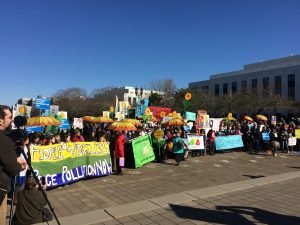 What I’ve learned in my years as a climate solutions advocate is that it’s very easy to find flaws with someone else’s plan to bring down carbon emissions. What is much harder is to be for it.
What I’ve learned in my years as a climate solutions advocate is that it’s very easy to find flaws with someone else’s plan to bring down carbon emissions. What is much harder is to be for it.
I used to bristle when anyone would argue that when pricing carbon, cap and trade is better than fee and dividend. I used to disagree when someone would say federal action is impossible, so we should focus on state and local action.
Not anymore.
Every day I become more convinced that saying yes to ALL credible efforts to transition away from fossil fuels and solve climate change is the most essential action we can take to have a chance of avoiding catastrophic climate change.
We are long past the time when we can debate the perfect approach. The most recent report from the IPCC (the United Nations’ scientific panel on climate change) stated these stark facts: we are on track to face a world of worsening food shortages, wildfires, mass die-offs of coral reefs, droughts and poverty by 2040. Avoiding this future requires transforming the world economy beginning immediately, at a speed and scale that has “no documented historic precedent.”
What would happen if all of us who understand the urgent threat posed by climate change decided to say yes to any proposal that good evidence suggests will bring down greenhouse gas emissions and help contain climate change? Carbon tax or cap and trade? Yes! Renewable energy standards or clean energy subsidies? Yes! State or federal action? Yes! Fracking ban or methane leak reduction? Yes! Solar access requirements or solar tax credits? Yes! Green New Deal or Energy Innovation and Carbon Dividend Act? Yes! Electric vehicle incentives, closing coal-fired power plants, or setting efficiency standards for new buildings? Yes!
Enacting climate solutions is a huge lift. Huge. Anything that gets passed will not be perfect. The powerful interests who profit from fossil fuels will continue to use their resources to block or slow action, and they have a lot of resources. Therefore, all our attention right now needs to be on getting things done, not arguing with each other about why my policy is better than yours.
And the good news is that during the past 30+ years of disinformation and inaction, experts have converged on the things we can do that will work. We now have the knowledge, expert consensus, and technology to tackle climate change.
My previous post, “Seven things we can do now to fight climate change,” shares this consensus. You can also read about expert consensus here and here.
We know what we need to do, so let’s not let the fine print get in our way. If bold proposals are offered, consider saying yes first, and asking questions later. The only way we will have a chance of bringing down emissions during the window that matters is if we stop trying to win with our favorite proposal and agree to agree.
And, for climate policies you just can’t support, consider my grandma’s wisdom: if you can’t say something nice, don’t say anything at all.
Seven things we can do now to fight climate change
One thing that gets me out of bed in the morning is my belief that we know what to do to begin tackling the climate crisis, we just need to get to it!
Last month, Brad Plumer and Blacki Migliozzi wrote in the New York Times about seven things other countries or states are doing to cut greenhouse gas emissions that we can do here in the U.S. I was curious to see how these seven policies aligned with the consensus priorties I’m aware of, and I’m happy to say it’s a pretty good fit.
Here they are:
ONE: Enact an economy-wide carbon tax similar to British Columbia’s, starting low and rising over time. The consensus among climate scientists, economists, and world leaders is that a well designed carbon fee is the single most effective first step we can take to begin the transition to off fossil fuels to a clean energy economy.
TWO: Require utilities to produce all their electricity from zero-carbon sources by mid-century. New York, California, and Hawaii have passed this requirement already.
THREE: Pass agressive electric vehicle incentives like Norway has done. Plug-in vehicles now make up half of all new sales in Norway.
FOUR: Set efficency targets for cement, steel, and petrochemical industries, like China has done.
FIVE: Set energy efficiency standards for new homes and commercial buildings, like California has done. National adoption of such standards could dramatically reduce emissions from heating and cooling buildings.
SIX: Regulate to curb methane emissions from oil and gas operations, similar to Canada’s methane rules which aim to reduce emissions from oil and gas operations 40-45 percent below 2012 levels by 2025.
SEVEN: Pass legislation to phase out the use of hydrofluorocarbons, as the European Union has done. These powerful greenhouse gases are used in refrigerators and foams. The 2016 Kigali Amendment requires phasing out these fluorinated gases, but we have not yet complied.
I’ll be looking for ways to help you take action in support of these policies. If you haven’t done so, I invite you to join Power Up to get my action invitations. Because strange as it sounds, researching and sharing climate solutions is what gets me out of bed in the morning!
PLEDGE TO VOTE FOR THE CLIMATE!
The climate needs your vote! Not just in presidential elections, but in local, state, and mid-term elections too. Take action by signing this pledge to vote, created by the Environmental Voter Project. By doing so, you voice your commitment to being a consistent climate voter, and you’ll receive reminders to vote before every single election!
PLEDGE TO VOTE FOR THE CLIMATE!
Why is this pledge important? (from the Environmental Voter Project)
- Environmentalists don’t vote as often as they should. When you sign this pledge, you’re sending a loud message that you’re going to start voting your values.
- We’ll send you reminders to help you show up to every election. Studies have shown that these simple, free reminders can help you be a much more consistent voter.
- Are you already a perfect voter? Please sign the pledge anyway! The more people who pledge to vote, the easier it is to convince others to join you!
Why we won’t be focusing on changing your lifestyle
Power Up for Climate Solutions is here to help people take action to tackle climate change. So I’ve spent a lot of time considering this question: What are most of us not yet doing that will make a big difference?
It may surprise you to hear that every single person I’ve asked who has joined Power Up for Climate Solutions is taking steps to lower their carbon footprint—whether it’s through eating a plant-based diet, driving less, buying less, conserving energy, installing solar panels, or purchasing renewable energy. And yet, most report feeling hopeless or at least discouraged about our chances of solving the climate crisis.
I think you already know that the behavioral changes you may be making aren’t enough. Emissions are rising again, climate impacts are intensifying, and as all credible scientific reports have emphasized, we are out of time.
We know that along with lifestyle changes, we need a rapid societal and political transformation. We need to become a country (and a world) transitioning quickly away from fossil fuels and toward energy efficiency and clean energy. In order to begin this massive transformation, first we need to be talking about it—a lot.
The reason talking about climate change and climate solutions is vital is this: we humans are social animals. We are strongly influenced by our friends, family, peers, members of groups we belong to, our leaders, and our constituents. Studies have found that once 10% of a population are dedicated to a cause (such as a rapid and just transition to a clean energy economy), cues from these dedicated folks can very quickly shift the prevailing attitudes in a society, instigating unexpectedly rapid societal and political transformations. Examples include women gaining the right to vote, the civil rights movement, the fall of the Berlin Wall, the legalization of gay marriage, and the legalization of marijuana.
Polls indicate that we’ve blown well past this 10% threshold on climate change. According to the Yale Program on Climate Change Communication’s newest survey, 72% of Americans say global warming is extremely, very, or somewhat important to them, and 29% are alarmed, an 8-point increase from March 2018. However, only 8% say they often discuss global warming with friends and family. I am convinced that the most important thing we now need to do is speak up more—with our friends, families, in our communities, to our elected officials, and just whoever! (By the way, I didn’t come up with this idea–see Joe Romm’s comments here.)
I hope you will continue to make all the lifestyle changes you can to reduce your carbon footprint and transition to a clean energy economy. We will sometimes offer actions in this arena. However, most of the actions from Power Up will focus on ways to communicate with and influence those around you. They may include suggestions for talking to everyone–your sister, your electrician, your city councilor, your senator–about why you care about climate change, why we can and we must address it, and solutions that are technically and economically feasible. Because we know this is how societal transformations get started.


